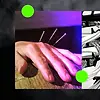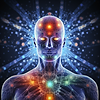
AI-Directed Acupuncture
AI-Guided Acupuncture is applying artificial intelligence (AI) technologies to support or automate key aspects of acupuncture practice. It integrates traditional Chinese Medicine (TCM) knowledge with modern tools such as machine learning, data analytics, robotics, and sensor technologies. The goal is to enhance the precision, personalisation, and consistency of acupuncture treatments. Core functions of AI-guided acupuncture include:
-
Acupoint Selection: AI models analyse clinical data, such as symptoms, tongue images, pulse signals, and patient history, to recommend the most effective acupoint combinations.
-
Diagnosis Support: AI assists in syndrome differentiation by recognising complex symptom patterns and correlating them with established TCM diagnostic frameworks.
-
Real-Time Feedback: Wearable sensors and biofeedback tools measure patient responses (e.g., heart rate variability, skin resistance), enabling dynamic adjustments to treatment parameters.
-
Robotic Assistance: In research and emerging clinical settings, robotic arms and guided devices deliver precise needling or non-invasive stimulation, particularly for remote care or standardised protocols.
By combining ancient wisdom with modern intelligence, AI-guided acupuncture represents a promising evolution in integrative medicine. It preserves TCM's holistic approach while bringing greater objectivity, reproducibility, and global scalability to the practice.
AI Applications in Acupuncture Practice include:
1
Diagnosis and Point Selection
AI algorithms analyse patient data, including symptom patterns, pulse data, tongue images, and medical history, to identify optimal acupoints for treatment. Models such as BiLSTM, Transformer networks, and knowledge graphs enable syndrome differentiation with greater accuracy, enhancing point selection for targeted therapeutic outcomes. These tools support dynamic treatment planning, with acupoints adjusted in real time based on symptom evolution or biofeedback signals.
2
Personalised Treatment Planning
AI systems tailor acupuncture prescriptions by considering an individual’s constitution, lifestyle, current symptoms, and past responses to treatment. This precision level ensures treatments are more effective, safer, and better tolerated, particularly in complex or chronic conditions.
2
Real-Time Monitoring and Biofeedback Integration
Wearable devices and biosensors are now being used with AI to monitor real-time patient responses to acupuncture. Metrics such as heart rate variability (HRV), skin conductance, muscle tone, and respiration patterns can provide immediate feedback to the practitioner—or even an AI system—that adjusts stimulation parameters accordingly. This approach supports closed-loop acupuncture systems, increasing treatment safety and effectiveness.

Acupuncture is one of the most internationally recognised and widely practised components of Traditional Chinese Medicine (TCM). With a documented history spanning over 3,000 years in China, acupuncture involves the insertion of fine, hair-thin needles into specific points on the body, known as acupoints, to stimulate the flow of qi (vital energy) along the meridians. It aims to restore energetic balance and promote physiological harmony within the body. Acupuncture has been shown to have therapeutic value in a broad range of health conditions, including chronic pain, anxiety, depression, gastrointestinal disorders, infertility, and post-stroke rehabilitation.
In the 21st century, acupuncture is undergoing a digital transformation, largely driven by artificial intelligence (AI) advances. Integrating AI into acupuncture enhances diagnostic accuracy and treatment precision and revolutionises education, feedback mechanisms, and patient engagement.

Acupuncture and AI
4
Outcome Tracking and Data Analytics
Digital records supported by AI allow for continuous tracking of patient progress across sessions. By compiling and analysing large amounts of clinical outcome data, AI tools can assess treatment efficacy, forecast therapeutic trajectories, and suggest course corrections, creating an evidence-informed feedback loop.
2
Education and Simulation
AI transforms acupuncture education by providing realistic virtual patient simulations and interactive training platforms. Intelligent tutoring systems can evaluate students' acupoint selection, technique, and diagnostic reasoning. Adaptive learning systems adjust content based on learner performance, guiding practitioners toward mastery through personalised feedback and scenario-based learning.
2
Research and Standardisation
AI is used to analyse large datasets from clinical trials and historical acupuncture records to establish standardised protocols, validate point indications, and map new clinical correlations. This contributes to a more evidence-based framework for acupuncture practice, enhancing its credibility within integrative and biomedical care systems.

Traditional Acupuncture
Based on the practitioner’s training, intuition, and observation (tongue, pulse, symptoms)
Drawn from classical theory, personal experience, and case-by-case judgment
Tailored to the individual's constitution and syndrome pattern
Needles, moxa, cupping, electrostimulation
The practitioner’s feel decides manual insertion, depth, and angle
Based on the patient’s verbal feedback, pulse changes, or facial cues
Based on practitioners’ clinical experience over time
Variable, depending on the practitioner’s experience
Broad and holistic, rooted in classical TCM theory
Relies on apprenticeship and classical texts
Subjective quality depends on practitioner skill
AI-Guided Acupuncture
Augments diagnosis using AI-analysed images, symptom input, and biosensors
Optimised through pattern recognition, case databases, and predictive algorithms
Hyper-personalised using large datasets and adaptive learning
May include cameras, sensors, wearables, robotic arms, electroacupuncture systems
Automated or assisted insertion based on anatomical mapping and sensors
Real-time monitoring using HRV, EMG, skin temperature, or AI feedback loops
Machine learning continuously refines protocols across populations
Can be faster due to real-time suggestions and automation
Often focused on specific use cases (pain, anxiety, digestion) initially
Includes simulations, point logic tutors, and interactive AI training tools
May oversimplify or misinterpret complex syndromes if the data is limited
Acupoint Selection and Prescription
Acupoint selection and prescription form the foundation of effective acupuncture treatment. Traditionally, practitioners determine the optimal acupoints—among the 361 points distributed across 14 meridians—based on syndrome differentiation gathered through TCM’s four diagnostic methods (inspection, listening/smelling, inquiry, and palpation). The process involves choosing primary points based on the patient’s condition and constructing a prescription of point combinations tailored to the individual. Despite centuries of practice, there remains a lack of standardised protocols for acupoint selection across many diseases. This gap has created an opportunity for artificial intelligence (AI) to support and advance acupuncture practice.
AI-directed acupuncture leverages data mining techniques and machine learning algorithms to analyse vast and often complex clinical datasets. With access to increasingly comprehensive TCM databases, AI can uncover patterns and associations between diseases and acupoint usage that may not be immediately apparent through traditional analysis. Unsupervised learning methods—particularly association rule mining (such as the Apriori algorithm) and clustering techniques—have proven especially useful in identifying acupoint groupings, frequency patterns, and efficacy correlations. These AI tools digitise and quantify treatment knowledge, making it possible to:
-
Generate evidence-based recommendations for acupoint prescriptions.
-
Reveal novel acupoint combinations for emerging conditions.
-
Inform the development of standardised protocols for clinical use.
-
Advance the theoretical understanding of acupuncture by discovering latent knowledge hidden within historical and modern treatment data.
AI-directed acupoint selection and prescription play a transformative role in modernising acupuncture. They offer more objective, consistent, and evidence-based approaches while still being rooted in the holistic principles of Traditional Chinese Medicine.





Acupuncture Manipulation
Acupuncture manipulation refers to the deliberate twirling, rotating, and lifting-thrusting movements of acupuncture needles at specific acupoints, performed with precise control over depth, strength, frequency, and direction. These manual techniques are essential to stimulating qi and achieving therapeutic effects. However, variations in nerve excitability, tissue resistance, and temperature across different acupoints make consistent, effective manipulation challenging, highlighting the need for quantification and standardisation.
Recent advances in AI and sensor technologies have led to significant breakthroughs in quantifying and classifying acupuncture manipulation. Instruments now exist that can accurately measure the biomechanical parameters of needling techniques. Based on these measurements, a standardised TCM acupuncture manipulation database has been established, enabling the development of objective models that mimic traditional manual methods. One major advancement includes using self-organising neural network feature maps to develop classification models for lifting-thrusting manipulation. These AI models facilitate the differentiation between various manipulation types, such as reinforcing or reducing by twirling or rotating and reinforcing or reducing by lifting and thrusting. Additionally, computer vision systems integrated with convolutional neural networks (CNNs) and long short-term memory (LSTM) architectures have shown high accuracy in identifying and classifying dynamic needling movements from video input, enabling real-time feedback and precision training.
Other innovative systems incorporate electroencephalogram (EEG) signals to explore the neural response to different manipulation styles, offering new insights into patient reactions and the therapeutic impact of specific techniques. AI-assisted manipulation technologies are now paired with virtual reality (VR) environments for acupuncture training. These immersive systems allow students and junior practitioners to learn and refine manipulation techniques in a risk-free, feedback-driven environment, greatly enhancing the quality and consistency of acupuncture education.
Despite these advancements, challenges remain. Certain tactile parameters—such as the exact force, direction, and depth applied during manipulation—are still difficult to digitise or replicate fully. Ongoing research and developing more sensitive and sophisticated instrumentation are necessary to overcome these limitations.
In the long term, the integration of AI with acupuncture manipulation promises to improve the safety, reproducibility, and efficacy of clinical acupuncture, support the training and certification of practitioners through objective measurement tools and lay the foundation for standardised protocols that preserve the therapeutic essence of traditional techniques while leveraging the precision of modern technology. By bridging traditional craftsmanship with digital precision, AI is pivotal in bringing acupuncture manipulation into the next era of evidence-based practice.
Acupuncture Efficacy
Artificial Intelligence is increasingly being used to predict the clinical efficacy of acupuncture treatments, offering a transformative approach to personalised and evidence-based Traditional Chinese Medicine. One of the most promising areas in this field is neuroimaging-based efficacy prediction, which uses machine learning algorithms to correlate patient brain imaging data with treatment outcomes.
Researchers have recently explored how neuroimaging combined with machine learning can be a predictive tool for acupuncture response at the individual level. AI models can identify subtle patterns in brain activity that correlate with successful acupuncture treatments by training algorithms on datasets that include pre-treatment neuroimaging and clinical efficacy outcomes.
Among the most widely used algorithms in this domain is the Support Vector Machine (SVM), a supervised learning model that excels in binary classification problems. SVM can be trained to distinguish between likely responders and non-responders based on features extracted from neuroimaging data, such as fMRI or EEG, and clinical indicators. Once trained, this model allows clinicians to input a new patient’s clinical and imaging data and receive a data-driven prediction about the potential success of acupuncture treatment.
This form of AI-assisted decision support empowers practitioners to tailor treatment plans more effectively, improving the likelihood of positive clinical outcomes. It also avoids ineffective interventions, saving patients time and cost. Finally, integrating objective neurobiological evidence with traditional diagnostic frameworks strengthens the scientific basis for acupuncture.
Beyond neuroimaging, AI can also analyse broader clinical datasets—such as symptom reports, physiological signals, and treatment histories—to refine outcome prediction. As these models evolve, they contribute to a feedback-driven loop where each new case improves the system's predictive power. By incorporating AI into the evaluation of acupuncture efficacy, TCM practitioners can move toward a more objective, individualised, and data-informed practice, strengthening acupuncture therapies' credibility and clinical impact.


